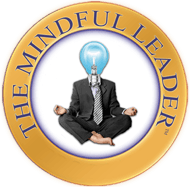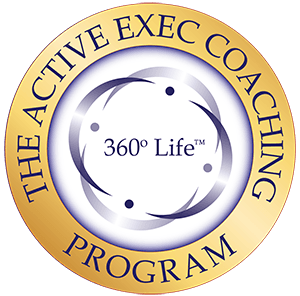When we are connected to our inner divinity, it may manifest itself as compassion, unconditional love, inspiration, and an overall sense of well-being regardless of what is going on in our circumstances or physical experience. “Problems” become much easier to solve and feel less traumatic from this perspective despite still arising. This is the power of your intentional focus, and because you focus on the good rather than wallowing in the negative, the negative disappears as the center of your focus. This means that, simply by shifting what you focus on, you can attract more and more positive experiences while also being able to effortlessly attract and see solutions and inspiration for any challenges you may be facing.
So, what does it mean in practical terms to connect to your inner divinity? What might that look like?
- Meditation.
When we talk about mindfulness, meditation is the go-to practice because it allows you to quiet your thoughts and bypass them to receive guidance from your divine inner being. It is recommended that you meditate for about 20 minutes a day, but you don’t have to start out with a long practice if you are new or feeling in any way uncomfortable about it from your current perspective.
The amazing thing about meditation is that you can literally do it anytime, anywhere, and there are no special tools required. Meditating essentially trains your brain to connect both hemispheres so that your moods and energies are in harmony. The connector between the two hemispheres is the pineal gland, which is also referred to as the third eye, and neuroscientists have now observed the physical changes in the brain when people experience enlightenment as a stronger connection between the two hemispheres.*
If you want to begin a meditation practice, all it takes is five minutes a day of mindful meditation to get you started in this habit. You can choose to do a guided meditation of some kind (YouTube has countless different types for free), listen to meditation music, or simply focus on your breath or a steady background sound. When you breathe, a very calming technique is to breathe in gently through your nose for 6 seconds, then exhale either through your nose or mouth for 6 seconds, slowing your breathing to 10 breaths per minute. Not only does this have a calming, soothing effect on your entire body, mind, and emotional state, but it will help you to quiet your racing thoughts and begin to control your focus intentionally.
- Inspiration.
When you’re inspired and having fun, that’s a very good indicator that you’re tapped into your divine inner being or soul. The activity itself isn’t nearly as important as the feeling of it, and being in this frame of consciousness will often lead you toward things that you need on some level and are attracting into your experience. This inspired action ties everything back to the Law of Attraction and the 7 Hermetic Principles, and the more often you are able to get into “the zone,” the more fulfilling your life will be to you.
Oftentimes, if you want to trigger yourself into feeling inspired, it can be helpful to begin the activity that you want to feel inspired to do and allow yourself to get lost in it. For me, this activity is often writing or creating music, so when I want to be inspired to write, I begin writing something and see what happens. More often than not, I find that I tap into my inspiration, get in the flow, and effortlessly write several thousand words at a time, sometimes even more. This is just one example, of course, and you may feel inspired doing something completely different, but that’s part of what you must determine for yourself because no one can do that for you but you.
To figure out what inspires you and how you can start practicing inspiration on purpose, think back to some activities you’ve done that made you feel amazing. Time seemed to disappear, you created something totally effortlessly, and the results were phenomenal and inspired. What activities can you think of that make you feel this way?
If you can’t think of any, my recommendation is to go out and start trying things that you feel drawn to for whatever reason. If you feel drawn to try something, go ahead and try it. Trying new things is one way to begin expanding your life experience, which is one aspect of personal growth and self-mastery. If you don’t know what you like, how are you supposed to cultivate inner peace and joy? Sometimes we have to learn how to “trick” ourselves or our ego mind into change because the ego is so change-resistant. The ego is also responsible for all of your negative and self-deprecating thoughts.
YOU are much more than what your mind tries to make you believe because of conditioning we have all been programmed with from birth. This conditioning comes in the form of thoughts repeatedly thought and words repeatedly spoken, which then become beliefs and are stored in the subconscious mind. To change these beliefs, many of which don’t serve your highest good, one must first observe and recognize the programmed or conditioned behaviors and thoughts so that we can choose differently next time.
- Observation.
Becoming the observer of your own life experience is one way in which we can “rise above,” so to speak, and begin speaking and behaving from a much higher level of consciousness. Your emotional triggers will fade away and then you can begin to practice non-reactivity in your daily life experience. What this looks like is effortlessly maintaining a sense of calm no matter what situation might arise, expected or unexpected, “good” or “bad.”
Observing your body’s responses to situations before judging anything can also help you to mindfully stay in the moment, slow down, be patient, and get a complete idea of what’s happening before deciding how to respond. Once you are at this point, you might surprise yourself with how calm you remain even in situations that might make other people freak out a little and overreact… including the old you. This is one aspect of becoming triggerless, an important self-healing practice if you’ve ever experienced trauma or have a tendency to overreact in the moment.
When you are at this point, you may very well still feel your heart skip a beat, feel your anger bubbling up. That’s perfectly okay, as you don’t want to forcefully suppress these emotions because their energy accumulates over time within your body. You must find a healthy way to release or transmute/redirect this energy so that it doesn’t cause you harm on any level over time. The way to channel this energy is by doing something constructive with it or releasing it through exercise or physical activity of some kind.
To channel or transmute your energy into something constructive, use it. Anger is especially great for this, which sounds strange, but bear with me. Anger is related to passion, so you can choose to channel your anger into something you need to do that is physically oriented. Gardening, mowing the lawn, moving furniture, deep-cleaning the house, or creating some kind of artwork that involves being physical like a metal sculpture or a wooden construction are all examples of this. If a physical activity seems less appealing, you can also channel your emotions into any type of art. This helps you to release any toxic emotional energy your body may be holding onto as well as allowing you to express yourself and create something incredible at the same time.
To release some of your negative energies, you can do exercise or begin a practice of energy healing through meditation. You will know best what you need to do, and as long as you are not causing any harm, the energy will be transmuted or released and you will feel lighter, not to mention more capable of handling whatever might come your way. You will build trust in yourself through these practices because one of the big reasons we might not trust ourselves completely is because we don’t trust ourselves to be able to positively handle our emotions, which can be extremely intense at times.
When you practice these three things on a regular basis, you will become better and better at making decisions and responding from a much higher, more divine perspective. You will “overstand” many things, simultaneously considering the perspectives of everyone involved in a circumstance and holding your response until you have all of the information required to make a wise decision rather than unconsciously over-reacting in the moment. And because you have trained yourself to observe first, you will be able to also observe yourself successfully applying your newfound triggerless attitude within the moment in which you do so. This is very rewarding and will allow you to truly see your own progress and appreciate it, which will help you validate yourself and your own experience as well as pick up momentum as you continue to grow into your true, soul-based self.
We tend to think of words like “divinity” as being far away concepts, not graspable in our physical reality. There’s something magical that unfolds before you in your life experience when you let go of these preconceived notions and understand the relationship between your humanity and your divinity. I hope that the concepts we’ve discussed here help you to make that connection and understand yourself and your life’s journey a little better.
Thank you so much for being here and allowing us to share some insights and ideas with you through these blog articles! Continuous learning fuels continuous growth, so I hope you’ll join us again next month for a new Mindful Leader Blog article.
For more information about the Mindfulness Movement or the International Mindfulness Federation, please visit:
http://executivecoachinguniversity.com/mindfulness-movement
*How Enlightenment Changes the Brain
https://bigthink.com/videos/andrew-newberg-neural-enlightenment-101









